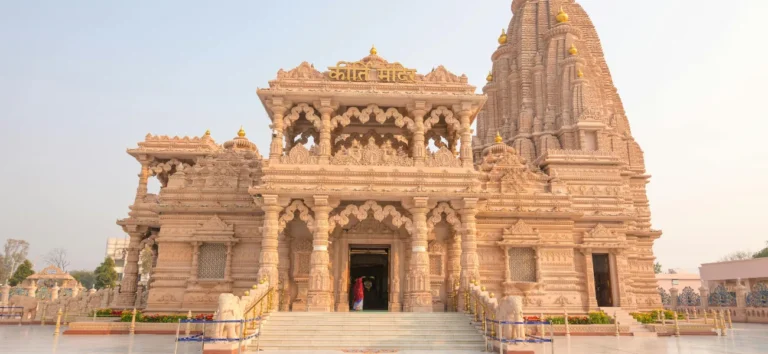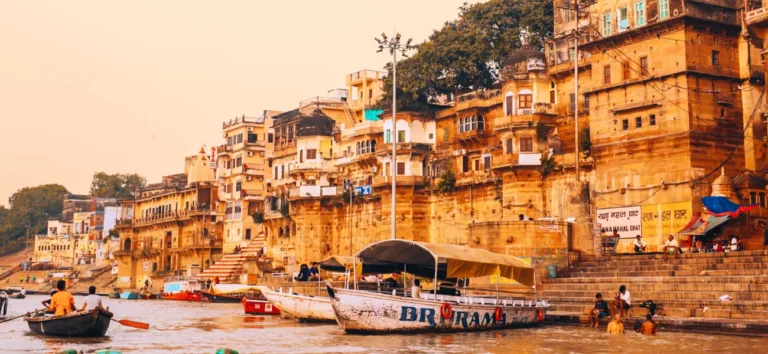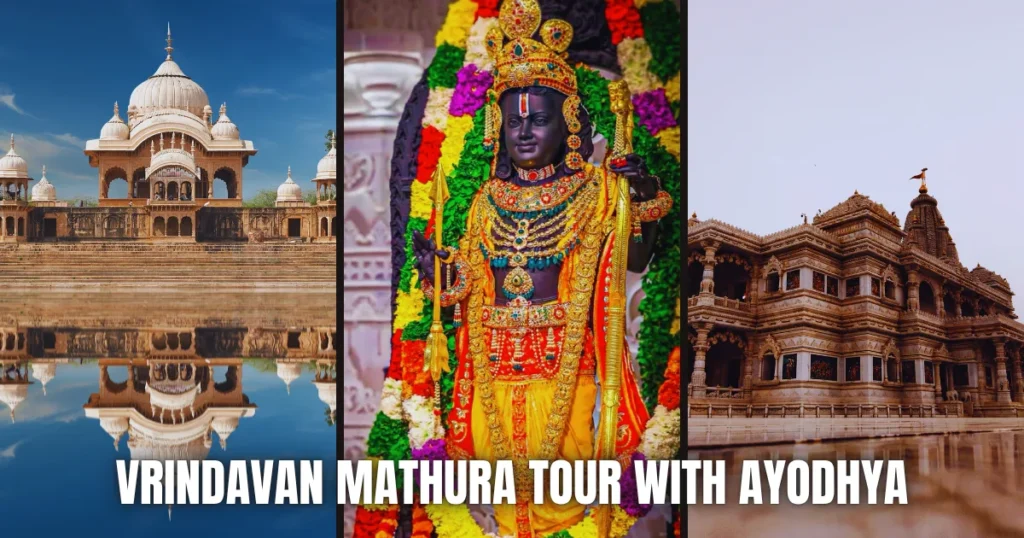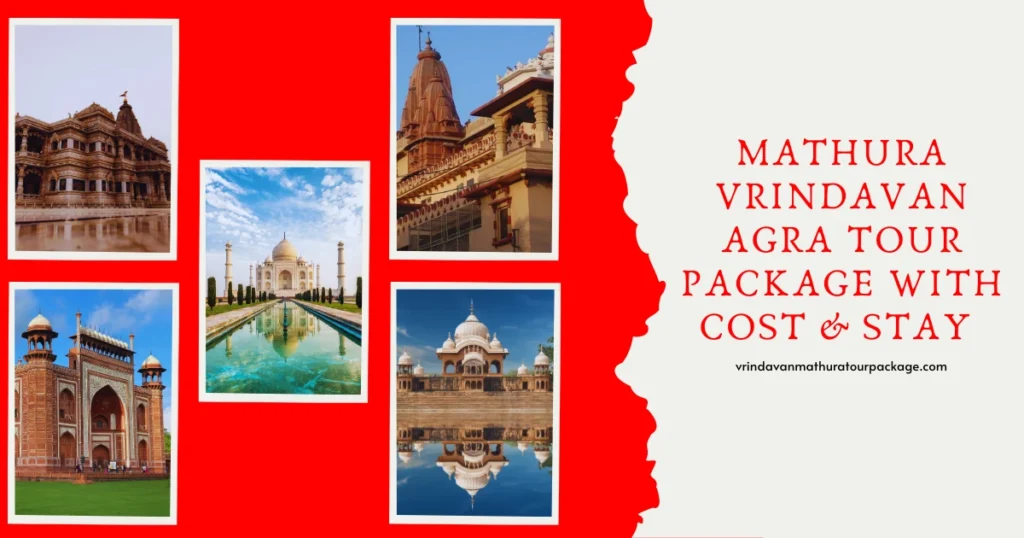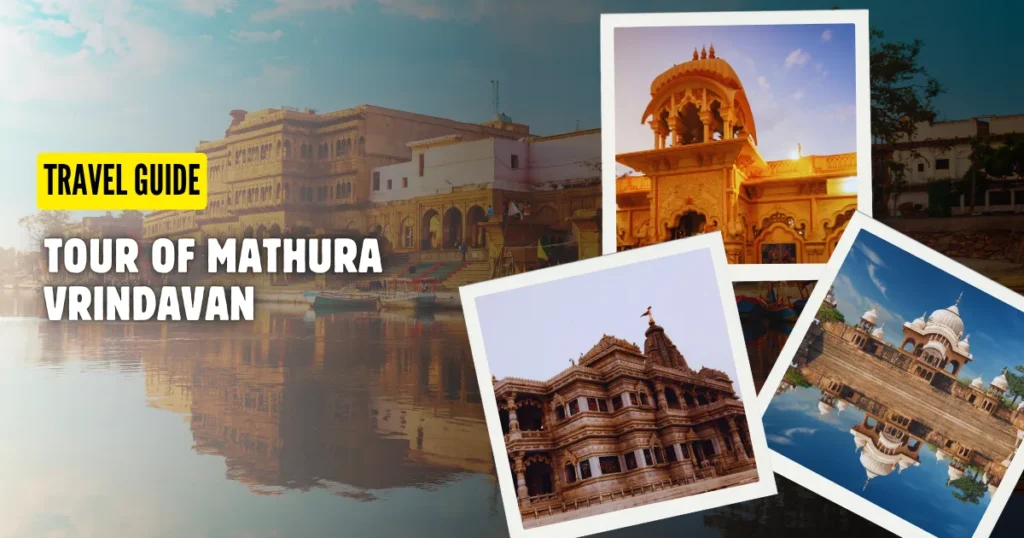Imagine a place where every cobblestone whispers ancient stories, where spirituality dances in the air like invisible magic. Welcome to Vrindavan – Best Time to Visit Vrindavan not just a town, but a heartbeat of divine connection nestled along the gentle Yamuna River.
Highlights
ToggleThis isn’t just a destination; it’s a living, breathing canvas of emotions and traditions. Each season here tells a different story. When spring arrives, Vrindavan transforms into a riot of colors during Holi – imagine streets erupting with laughter, strangers becoming friends, and joy splashing everywhere like liquid happiness.
Summer brings a different kind of magic – cool temple corridors offering sanctuary from the heat, where ancient walls seem to whisper sacred secrets. Autumn arrives dressed in melodious devotion, celebrating the eternal love of Radha and Krishna through music that seems to flow from another world.
Winter is when Vrindavan truly sparkles – festivals like Diwali and Janmashtami paint the town in twinkling lights, filling hearts with warmth despite the cool breeze. Whether you’re a spiritual seeker, a culture enthusiast, or simply a curious traveler, Vrindavan doesn’t just welcome you – it embraces you with stories older than time itself.
Best Time to Visit Vrindavan
The best time to visit Vrindavan is during the winter months, from October to March, when the weather is pleasant, and the town is alive with cultural and spiritual activities. With temperatures ranging between 8°C to 25°C, this period provides the perfect environment for exploring temples, ghats, and ashrams without the discomfort of extreme weather.
Why October to March is Ideal?
- Festivals and Events: Experience grand celebrations of Janmashtami, Diwali, and Holi.
- Comfortable Climate: Mild temperatures make sightseeing enjoyable, especially at iconic landmarks like Banke Bihari Temple, ISKCON Temple, and Prem Mandir.
- Cultural Vibe: Participate in vibrant Rasleela performances and soulful kirtans that reflect Vrindavan’s heritage.
For those looking to immerse themselves in Vrindavan’s spiritual essence and cultural richness, October to March is undoubtedly the best time to visit Vrindavan.
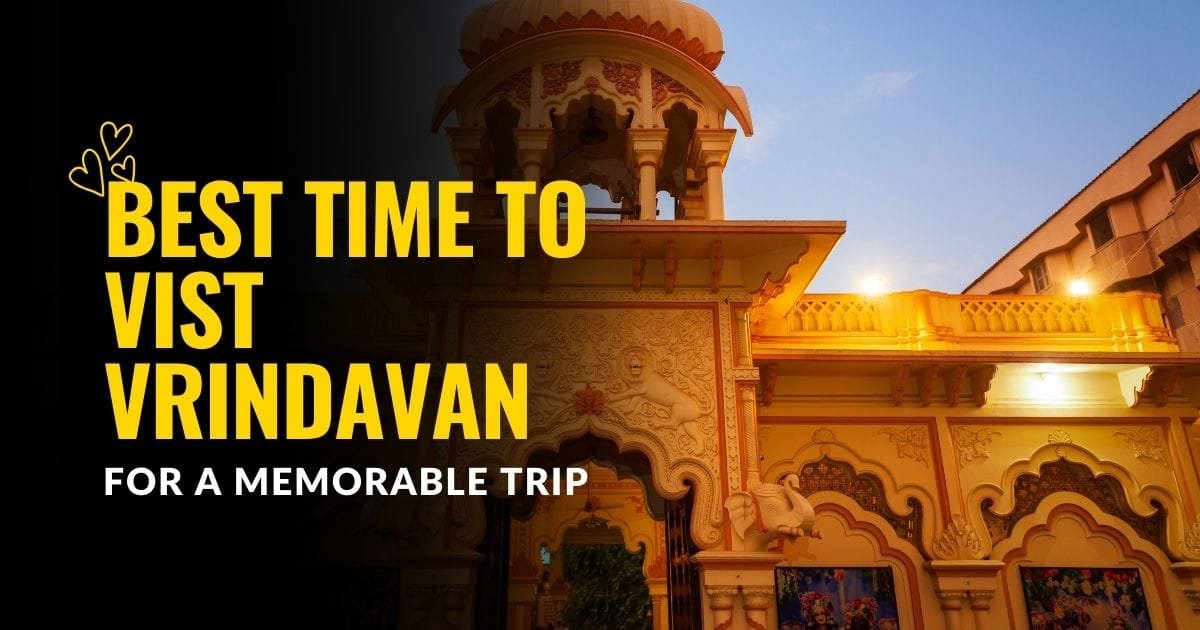
Spring – The Season of Holi in Vrindavan
Spring, spanning February to March, is synonymous with Holi, the festival of colors, which is celebrated with unparalleled enthusiasm in Vrindavan.
What Makes Spring Special in Vrindavan?
- Holi Celebrations: Participate in unique traditions like Phoolon Ki Holi (Holi with flowers) at Banke Bihari Temple and Lathmar Holi in Barsana, just a short distance from Vrindavan.
- Nature’s Bloom: The town’s lush greenery and blooming flowers create a serene backdrop for temple visits.
- Spiritual Activities: The atmosphere is charged with devotion as devotees sing bhajans and perform kirtans in honor of Radha and Krishna.
Spring is a vibrant time to experience Vrindavan’s joyous spirit, making it a peak season for visitors.
Summer – Experiencing the Spiritual Fervor in Vrindavan
The summer months, from April to June, may bring soaring temperatures, but they also offer a unique charm for those seeking a quieter and more introspective visit.
Why Visit Vrindavan in Summer?
- Quieter Temples: Enjoy peaceful darshan at popular temples like Prem Mandir and Banke Bihari without the usual crowds.
- Festivals: Witness the devotion of locals during Akshaya Tritiya and Narsingh Jayanti celebrations.
- Evening Serenity: The cooler evenings are ideal for leisurely walks along the Yamuna River or attending the enchanting Yamuna Aarti.
While not the most comfortable season, summer in Vrindavan offers a tranquil spiritual retreat.
Monsoon – Witnessing the Divine Love in Vrindavan
Monsoon, from July to September, transforms Vrindavan into a lush green haven, symbolizing the divine love of Radha and Krishna. The rains bring a refreshing ambiance to this holy town.
Highlights of Vrindavan in Monsoon:
- Jhulan Yatra: Witness the beautifully decorated swings of Radha and Krishna during this festival, celebrated with grandeur in temples.
- Lush Surroundings: The town’s greenery is rejuvenated, enhancing the serenity of temples and ghats.
- Less Crowded: Ideal for those seeking solitude and a deeper connection with Vrindavan’s spiritual aura.
Monsoon is an offbeat season that adds a mystical charm to the best time to visit Vrindavan for a peaceful experience.
Autumn – Celebrating the Festival of Radha Rani in Vrindavan
Autumn, spanning September to October, is marked by Radhashtami, the celebration of Radha Rani’s birth. This is a time of devotion and festivities, attracting pilgrims from all over the world.
Why Visit Vrindavan in Autumn?
- Radhashtami Celebrations: Temples like Radha Raman and Radha Vallabh host grand events with processions, music, and decorations.
- Mild Weather: The pleasant climate is ideal for exploring spiritual landmarks like Nidhivan and Seva Kunj.
- Festive Spirit: Participate in traditional rituals and immerse yourself in Vrindavan’s vibrant culture.
Autumn is a spiritually enriching season, making it one of the best times to visit Vrindavan for devotees of Radha and Krishna.
Winter – Exploring the Cultural Heritage of Vrindavan
Winter, from December to February, is the peak tourist season in Vrindavan. The chilly weather complements the town’s spiritual ambiance, drawing visitors in large numbers.
Why Winter is Perfect for Vrindavan?
- Festivals: Celebrate Krishna Janmashtami, Diwali, and Kartik Purnima with grandeur.
- Heritage Walks: Explore iconic temples, ancient ghats, and spiritual hubs without the discomfort of heat.
- Yamuna Aarti: The evening aarti by the river is especially mesmerizing during this time.
Winter offers a harmonious blend of spirituality, cultural richness, and pleasant weather, making it a favorite season for travelers.
Festivals and Events in Vrindavan Throughout the Year
Vrindavan’s festivals reflect its deep connection with Krishna and Radha’s divine stories:
- Janmashtami (August/September): Midnight prayers, Rasleela performances, and temple decorations mark the birth of Krishna.
- Holi (March): Celebrated uniquely with flowers, colors, and songs dedicated to Krishna.
- Radhashtami (September): Grand festivities honor Radha Rani with processions and kirtans.
- Diwali (October/November): Temples are illuminated beautifully, creating a magical atmosphere.
- Jhulan Yatra (July/August): Deities Radha and Krishna are adorned and placed on swings for public darshan.
These festivals provide a deeper cultural and spiritual connection to Vrindavan Tours and Packages.
Conclusion: Plan Your Visit to Vrindavan at the Perfect Time
Vrindavan isn’t just a destination – it’s a spiritual heartbeat that calls to the soul, whispering ancient stories of devotion and wonder. Imagine a place where every moment feels like a sacred embrace, where time seems to dance to a divine rhythm.
If you’re dreaming of a journey that touches your heart, let me tell you a secret. The magical window between October and March is when Vrindavan truly comes alive. Picture yourself wandering through streets that pulse with spiritual energy, where every temple, every corner tells a story of love and faith.
This is more than a trip – it’s a transformative experience. Feel the gentle winter sun warming your skin, listen to the melodious temple bells, and let the festive spirit of Radhashtami and other celebrations sweep you into a world of pure joy. Imagine Holi’s vibrant colors painting your memories, temple visits that calm your spirit, and moments that feel like they’ve stolen from a divine painting.
At Mathura Vrindavan Tourism, we don’t just plan trips – we craft journeys of the heart. We’re your companions in discovering a world where spirituality isn’t just experienced but felt deeply in every breath.

